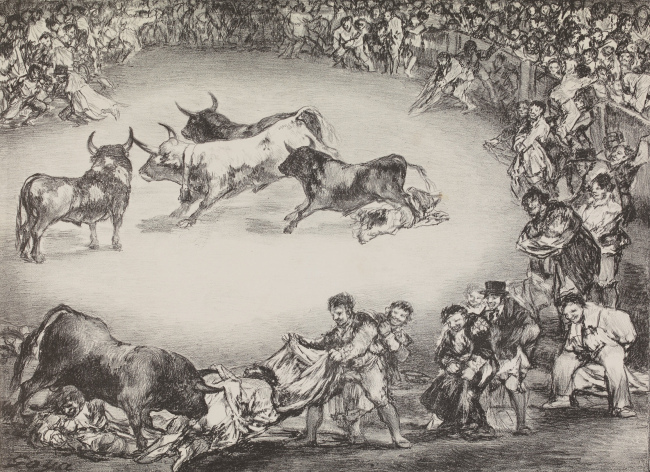Works from Spain make only U.S. stop in New Mexico
By Korea HeraldPublished : Dec. 16, 2013 - 19:22

SANTA FE, New Mexico (AP) ― A collection of drawings by Spanish artist Francisco de Goya is part of an international exhibition that’s making only one stop in the U.S. That stop is in New Mexico.
“Renaissance to Goya: Prints and Drawings from Spain” opened Saturday at the New Mexico Museum of Art in Santa Fe. It will run through March 9.
Museum officials say the exhibition is helping to rewrite the book on Spanish art since it was long assumed that Spanish artists didn’t draw much and produced little in terms of prints.
The exhibition is the result of Mark McDonald’s work as the curator of the British Museum, which has one of the world’s premiere print and drawing collections. McDonald gathered more than 130 sketches and prints from Goya and other artists to provide insight into four centuries of Spain’s culture and history.
“When I saw this exhibition, I thought this is a perfect exhibition for New Mexico,” said Mary Kershaw, who used to work in Britain and is now director of the New Mexico Museum of Art. “The Spanish heritage, the prints and drawings, the quality of the work ― it speaks to New Mexico, and I knew we had to have it here.”
Aside from Goya, the exhibition includes works from Bartolome Esteban Murillo, Francisco de Zurbaran, Juan Ribalta and Jose de Ribera. A number of them have never been on display before.
The stained, torn and folded condition of many of the surviving examples provides evidence they were used and reused by the artists as tools in developing compositions for paintings or for recording finished work before it left the studio, according to McDonald.
McDonald contends Spanish drawings are rare because they were not considered collectable works of art in their time.
“Looking at a drawing, it’s so immediate. You can picture the artist taking the pencil and making the mark,” Kershaw said. “It’s sort of like a little insight into an artist’s working practice from 300, 400 years ago. To me, that’s so exciting.”
“Renaissance to Goya: Prints and Drawings from Spain” opened Saturday at the New Mexico Museum of Art in Santa Fe. It will run through March 9.
Museum officials say the exhibition is helping to rewrite the book on Spanish art since it was long assumed that Spanish artists didn’t draw much and produced little in terms of prints.
The exhibition is the result of Mark McDonald’s work as the curator of the British Museum, which has one of the world’s premiere print and drawing collections. McDonald gathered more than 130 sketches and prints from Goya and other artists to provide insight into four centuries of Spain’s culture and history.
“When I saw this exhibition, I thought this is a perfect exhibition for New Mexico,” said Mary Kershaw, who used to work in Britain and is now director of the New Mexico Museum of Art. “The Spanish heritage, the prints and drawings, the quality of the work ― it speaks to New Mexico, and I knew we had to have it here.”
Aside from Goya, the exhibition includes works from Bartolome Esteban Murillo, Francisco de Zurbaran, Juan Ribalta and Jose de Ribera. A number of them have never been on display before.
The stained, torn and folded condition of many of the surviving examples provides evidence they were used and reused by the artists as tools in developing compositions for paintings or for recording finished work before it left the studio, according to McDonald.
McDonald contends Spanish drawings are rare because they were not considered collectable works of art in their time.
“Looking at a drawing, it’s so immediate. You can picture the artist taking the pencil and making the mark,” Kershaw said. “It’s sort of like a little insight into an artist’s working practice from 300, 400 years ago. To me, that’s so exciting.”
-
Articles by Korea Herald










![[Hello India] Hyundai Motor vows to boost 'clean mobility' in India](http://res.heraldm.com/phpwas/restmb_idxmake.php?idx=644&simg=/content/image/2024/04/25/20240425050672_0.jpg&u=)









